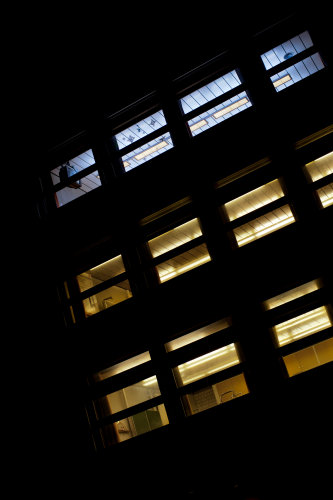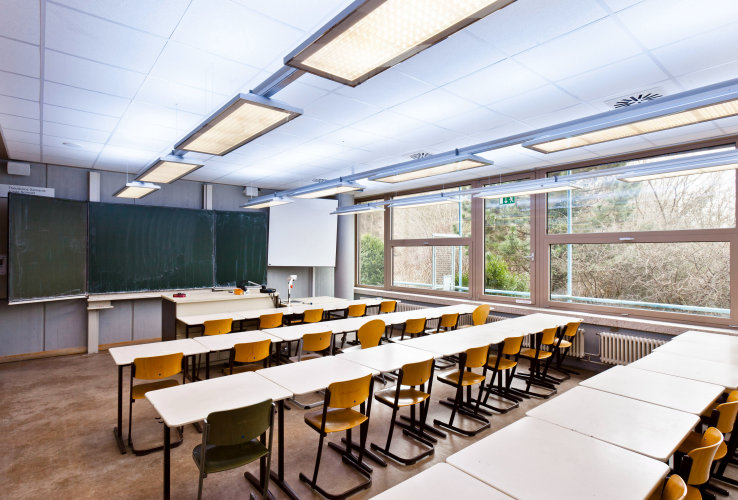New Light Creates Bright Sparks

Osram lighting study in Ulm, Germany, reveals positive effects of light on cognitive performance of students
A study investigating the effects of light on the performance of students at two schools in Ulm, Germany, was carried out by the "ZNL TransferZentrum für Neurowissenschaften und Lernen" (Transfer Centre for Neuroscience and Learning) in conjunction with lighting manufacturer Osram between November 2011 and February 2012. The aim of the study was to find out whether lighting that simulates daylight could increase concentration and cognitive performance in students. The results were consistently positive; due to the biologically optimised lighting in the classrooms, the students who took part in the Osram study achieved better results than the comparison group in standardised tests for concentration ability, and their performance speed also increased.

ZNL and Osram began the field study on the effects on cognitive performance in November 2011 at the Ferdinand von Steinbeiss School and the Robert Bosch School in Ulm, Germany. In each case, one classroom was fitted with the biologically optimised light, and the young people, ranging from 17 to 20 years old, attended classes both in the classroom with the new lighting and in classrooms with conventional lighting. For the duration of the study, the students had to repeatedly take various standardised performance and concentration tests, such as Brickenkamp's d2 test of attention (see details of the test under "Further information"). The test results were compared for biologically effective light in relation to conventional lighting.

Artificial daylight by means of different-coloured LEDs
The biologically optimised lighting can be produced by combining blue and white LEDs. Osram enhanced an LED light developed by their subsidiary company Siteco, so that they could bring artificial daylight into the classroom specifically for the study. "In order to create an artificial sky in the classroom, we use strips with blue and white LEDs that can be controlled independently of each other. Therefore, the light colours can be mixed dynamically and reproduce the colour temperature of the sky inside the building", explains Dr. Hannah Helbig, Innovation Manager at Osram.
Reducing social jetlag
"Even though it has been recognised for a long time that light with a specific colour temperature and illumination intensity has a positive effect on people's performance and well-being, the fact that the students with the biologically optimised lighting had up to a third fewer errors in the concentration test is impressive", said Dr. Katrin Hille (head of research at ZNL), who was in charge of the light study. Contributing to the positive results also was the fact that biologically optimised light provides stimulation to the body as if the person was outdoors. That is, the students' circadian rhythms shift forward and the young people became fit earlier. Therefore, this light can counteract social jetlag - tiredness in the mornings frequently observed in young people particularly. Many participants in the study are enthusiastic about the new lighting: "My concentration is actually better. In normal light, however, I sometimes have to keep myself awake in the classroom", as one student described the experience.
Teachers also benefit
It is not only the students that appreciate the new light - so do the teachers. "Many teachers, even those that were sceptical about the new lighting at the beginning, told me at the end of the study that they are also now feeling better", said ZNL researcher Oliver Keis, who also worked on the study.
Further Information: Brickenkamp's d2 test of attention
The d2 test is a standardised, more developed version of the cross-out test. It measures the speed and accuracy of a person's working behaviour when differentiating between similar visual stimuli (detail discrimination), so it allows evaluation of their individual performance with regard to attention and concentration.
ABOUT OSRAM
OSRAM (Munich, Germany) is part of the Industry Sector of Siemens and one of the two leading lighting manufacturers in the world. Sales for OSRAM worldwide totalled to €4.7 billion in fiscal year 2010, 88 percent of which came from outside Germany. OSRAM is a high-tech company in the lighting industry. Over 66 percent of sales come from energy-efficient products. This global player employs around 40,000 people worldwide, supplies customers in some 150 countries and has 46 production facilities in 17 countries (September 30). www.osram-group.com